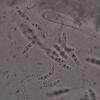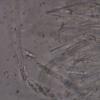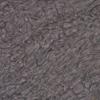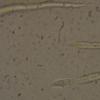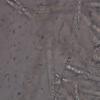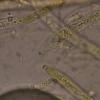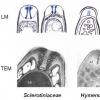
21-12-2025 09:32
Hello.A tiny ascomycete found embedded in wood in

22-12-2025 00:47
Patrice TANCHAUDBonsoir, récolte à proximité du milieu dunaire

21-12-2025 21:32
Pol DebaenstHello, Garden, Burgweg 19, Veurne, BelgiumOn 10/1

21-12-2025 21:40
Isabelle CharissouBonjour, j'aimerais connaitre les références de

21-12-2025 21:31
Pol DebaenstHello, Garden, Burgweg 19, Veurne, BelgiumOn 10/1

21-12-2025 21:31
Pol DebaenstHello, Garden, Burgweg 19, Veurne, BelgiumOn 10/1

20-12-2025 23:08
Patrice TANCHAUDBonsoir, récolte sur sol sablonneux dans l'arri�

20-12-2025 15:47
Mirek GrycHi.These grew on pine wood that was heavily covere
 A bit lost with these bald-ones.
A bit lost with these bald-ones.Spores +- fusoid, with prominent septa already in ascus. Often constricted at septa. Mature spores with 1-3 septa. Large vacuoles. Spores often disintegrate in two (after some physical pressure). Size 15-22 x 3-5(6) um.
Paraphyses cylindrical, with large refractive vacuole in the upper part.
Asci often over 100 um in length, apical part blue in MLZ. Croziers not observed.
On dead Betula in southern Finland. A fresh and "good-looking" specimen.
Feel free.
Timo

do you haver a photo of the blue apical ring? I am not sure whether to put this alternatively in Calycina. You have nice living asci, is there also a photo where spore septation is visible inside of them?
Zotto

I guess the ring is of the Calycina type, so it isn't a Hymenoscyphus.
"Inside asci" is not enough, it is important to look the spores inside living asci. You have a turgescent ascus on your photo but cut away... Hymenoscyphus ejects always non-septate spores, calycina often 1-septate.

T

Hi Timo,
"the thing" is different if you use Melzer or Lugol (alternatively Barals solution).
Melzer contains chloral hydrate and kills the cells. The hemiamyloid reaction that is a vital reaction is suppressed by Melzer. So you should use only IKI (Lugol, Barals solution) and no Melzer.
Regards from Lothar

The differences are illustrated below. Surely they are not always as different as there, and both red and blue reactions occur in all these groups.
So we must search in the genus Calycina.

Specimen is still alive and kicking,
Timo




